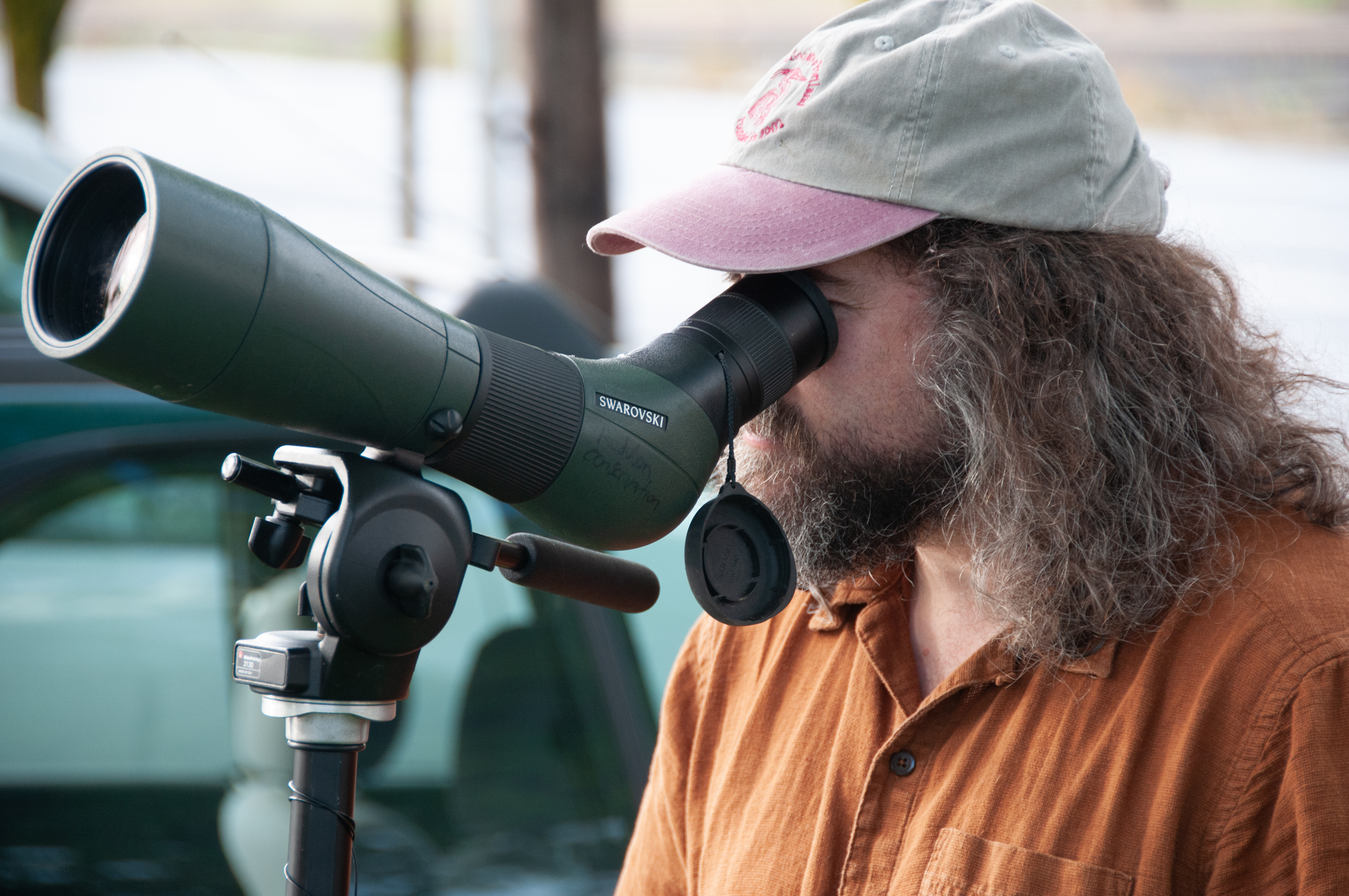
Bob Sallinger poses for a photo. Sallinger became well known for his decadeslong work in conservation in Portland and across Oregon.
Vince Patton / OPB
Editor’s note: This is an opinion piece by Vince Patton, a retired journalist from OPB who first met Bob Sallinger when covering the environment for KGW-TV and found him invaluable for other stories at OPB’s “Oregon Field Guide.” Sallinger died Thursday at 57.
Oregon knows Bob Sallinger as one of the state’s most persistent environmental advocates and a fierce defender of wildlife losing ground to human impacts.
I remember him as the Falcon Father.
Peregrine falcons made an enormous comeback in our region thanks to efforts he led as the conservation director of Portland Audubon (now Bird Alliance of Oregon). After nearly being wiped out by DDT, falcons steadily returned and became experts at nesting on human structures. He tracked how well they did, and in one circumstance made sure chicks survived.
A more than $30 million repair project on the St. Johns Bridge in Portland threatened a falcon nest with two chicks in it. Bob decided he had no choice but to make an extreme intervention. He called it an unavoidable “last resort” to keep the birds alive.
Fortunately, Bob was a climber with no fear of heights (or at least none he ever admitted to).
He climbed the girders to the nest, scooped the chicks out to safety and took them to the Audubon Wildlife Care Center. There his team went to extraordinary lengths to make sure the chicks did not imprint on the human caretakers.
The birds stayed in a box. Their “adopted mother” was a puppet that looked like a falcon. It brought them food through a hole in the box disguising the hands of their feeders. The chicks stayed wild and wary of humans, which is just what the caretakers wanted.
WATCH: Bob Sallinger spoke on OPB’s “Oregon Field Guide” in 2010 about his effort to track falcons in the Portland area.
Once grown enough, Bob took the young falcons to Sauvie Island and carried them up to a box on a homebuilt “hack tower.” There they could finally see their surroundings and choose to fly when they were ready. When I joined him at the tower for a story for KGW, the falcons were gone. We may have missed our photo op by just a day, but Bob just beamed. “They’ve left the nest!” he chuckled. He had kept the chicks alive to fledge on their own.
His most unusual climbs were probably up the very side of the Trojan Nuclear Power Plant. First, to install a nest box platform so falcons would nest outside the tower, not inside. Then years later, soon before implosion of the tower, we watched him climb Trojan one last time to dismantle the nest box after that year’s fledglings had left.
Later at OPB’s “Oregon Field Guide,” I followed Bob on an actual bridge climb. The Oregon Department of Transportation allowed Bob to lead us up stairs to the very top of the Interstate Bridge.
Once we were above the lift bridge’s counterweights, we crossed a catwalk to the west structure, and looked down to spot a falcon nest that has been home to chicks year after year.

Bob Sallinger attempts to place bands on legs of falcon chicks nesting on the Interstate Bridge between Portland, Ore., and Vancouver, Wash., in 2010.
Vince Patton / OPB
Bob climbed down to it, checked on two healthy, caterwauling chicks and placed bands on their legs. Momma falcon squawked warily nearby. Bob knew that the only way to know if falcon numbers were improving was if the birds were trackable later.
Since the 1990s, Bob followed the progress of falcons nesting on rooftops near the Willamette River and on the Fremont, St. Johns and Interstate bridges. Nests proved so successful with so many fledglings, he even drew a large falcon family tree tracing the genealogy of dozens of birds.
The only name missing from the tree was their common adoptive father: Bob Sallinger.

